How to plant cacti: step by step instructions
Cactus are succulent plants that store moisture. They can be of the forest or desert type. The former are distinguished by the presence of leaf-like stems, while the latter, more common, have a fleshy, rounded, elongated or whip-like stem - a body or trunk that is covered with thorns. The thorny framing is aimed at protecting the plant, and the stems carry out photosynthesis.
For a long time, thorny plants have been given a special place, they are radically different from ornamental plants in terms of appearance and care. Due to their unpretentiousness, cactus confidently occupy a leading position in indoor floriculture. First species cactus in European countries appeared thanks to Columbus and the variety of the collection of flowers in the royal greenhouses.
Content:
- General description of cacti
- The best varieties of homemade cacti
- Tank and soil preparation
- Planting cacti: basic rules
- Planting cactus seeds
- How to care for a cactus after planting
- Protection against diseases and pests
General description of cacti
The body of cacti in their natural environment can reach tens of meters. The highest is a North Mexican specimen called Pringle's Pachycereus. Its maximum height was almost 20 meters. And Blossfeldia is called the smallest, with a diameter of about 10 mm.
The difference between cacti and other succulents lies in the modified axillary growth buds.
The apical kidney is called the axilla, and the lateral ones are the areoles. At any time, cactus can stop the growth from the axilla and direct all their forces to the development of shoots from the areolas. So the body of a cactus is overgrown with mammillaria - children.
Another difference is the lack of inflorescences. Flowers in cacti are formed one at a time, do not have peduncles and perform male and female functions. The lower part of the flower is an extension of the stem and has an areola and spines. The size and color of flowers can be varied and unexpected.
The best varieties of homemade cacti
Today, more than 5,000 species of cacti are known, and half of them are adapted for cultivation at home. Most of them are absolutely unpretentious plants, but there are specimens that require special attention.
Some varieties of thorny representatives can often be seen in homes and offices, but not all growers know the correct name of the plants:
- Aporocactus. A common representative of this species is Flagelliformis. It is a multi-body specimen with long, ribbed, flowing stems, which are densely covered with short red bristles. It blooms at the end of winter with large red flowers with a raspberry tint, which densely cover all the stems. Aporocactus do not pretend to special care and feel comfortable in apartments and offices.
- Capricorn astrophytums. At a young age, a hike on a ribbed ball, but as it grows, it stretches upward. It can grow up to 30 cm. In summer, the body of an adult cactus is covered with yellow flowers, similar to small daisies.Astrophytum spines can be straight or curved.
- Mammillaria. The body in the form of a cylinder is covered with long spines, between which a fluffy white cobweb weaves. A large number of small children are formed on the trunk of an adult plant. These cacti are capable of blooming frequently, even at a young age. Small flowers form around the apical growth point. Sometimes, after flowering, interesting fruits remain, which serve as an additional decoration.
- Epiphyllums. The most common representative of this species is oxypetalum. It is a plant consisting of long, thin skeletal branches that end in broad, leaf-like shoots. The total length of the stems can reach three meters in length. Epiphyllums bloom with large tubular fragrant flowers.
- Cereus. The plant grows up to 60 cm and blooms very rarely. Its varieties have different characteristic features: they can be covered with thorns or be absolutely smooth, some bloom at night, others only during the day, but always with large white flowers. To achieve flowering from a cactus, it is necessary to arrange a cool winter quarters for it.
- Melocactuses. They have spherical and slightly elongated body shapes with pronounced ribbing, covered with curved spiny spines. A distinctive feature of cacti is the change in body structure upon reaching the flowering age. At this moment, a flat body, covered with bristles of small spines, begins to grow from the top of the trunk. This is a kind of peduncle on which flowers are formed. They call it cephalic.
- Rebuts. It has a rounded trunk, which is densely covered with thorns. During flowering, large flowers of various colors are formed on the cactus. To increase the duration of flowering, you need to place the plants in a ventilated area after the winter. This is a rare representative of capricious cacti, it does not tolerate prolonged drought and needs regular watering, and in winter it needs to be provided additional lighting.
- Fraileys. It has a small inconspicuous rounded body, but during flowering forms giant yellow flowers, which almost completely hide the thorny trunk. For regular flowering in winter, the cactus should be kept at a temperature no higher than 12 degrees and ensure minimal watering.
- Chamecerius Silvestri. It has a rapid growth rate, blooms with red flowers when the plant reaches a height of 8-10 cm.
Tank and soil preparation
It is better to carry out activities for planting and transplanting cacti in spring. When transplanting a purchased plant, it is carefully removed from the planting container and the roots must be soaked in a manganese solution, and then dried.
Large representatives of cactus should be replanted every two years, and smaller ones every three years. When transplanting, adult plants should completely change the soil and place them in a larger container.
Before planting a cactus, you should prepare the substrate and planting containers: these can be various pots or an aquarium.
Preparatory work:
- The choice of the landing container. Clay, plastic or glass containers are suitable for planting cacti. A composition of different types of plants planted in colored sand in an aquarium looks decorative. The size of the landing container is selected in accordance with the size and shape root system plants - the diameter should be slightly larger than the straightened roots. If the roots are long, then the container should be deep and narrow, and if branched, then wide and shallow. A deeper container is selected for aporocactus, and a wider one for mammillaria, because they form a large number of children. For aquarium compositions, you will need a wide but shallow terrarium or aquarium. You can take any shape of containers, focusing on your tastes and interior features. For the plants themselves, the shape of the pot does not matter.
- Preparing an earthen mixture. An earth mixture for different types of cacti is prepared from different components. But there is a universal composition of the soil mixture, suitable for all cactus. It is prepared from pebbles, coarse sand with a fraction, small pebbles (85-90%) and a small amount of earth (10-15%). It is better to take the forest land. It needs to be cleaned of roots and debris and ignited well in a microwave oven. Rinse the pebbles and boil. Such actions will help to avoid diseases and the reproduction of pests. Also, many cacti grow successfully in a mixture of equal parts of leafy earth and sand. For cacti of different ages, additives are needed in the finished substrate: lime for young specimens, and peat for adults.
Planting cacti: basic rules
How to plant a cactus correctly:
- a drainage layer and soil mixture are poured into the pot to the lower edge of the side
- make a recess in the center of the container
- install a cactus in the hole, gently straightening the roots with a thin object
- the root collar should be level with the ground
- cover the roots with soil
- distributes the soil evenly by tapping the pot on a hard surface
- a layer of pebbles is poured on top to protect the root collar and simulate natural conditions
After the procedure, a mark should be made on one side of the pot (for example, write the name of the cactus) and the plant should be placed against the window only with the opposite side, because cactus plants react negatively to permutations.
Planting plants in an aquarium follows the same scheme. But the top layer of soil can be covered with decorative stone or colored sand. This will diversify the composition and help fill in the space between the plants.
Planting cactus seeds
Cactus seeds can be purchased at flower shops. Sowing should be carried out in the second half of spring.
Landing rules:
- Seed preparation. Seed material is immersed in warm water for a day. It is treated with a manganese solution and dried.
- Fill the pot with drainage and soil mixture and spread the seeds on it.
- The containers are placed on a deep pan with water so that moisture penetrates through the drainage hole. You cannot water the crops from above.
- Cover the pots with glass and keep at a temperature of 26-30 degrees. Once a day, the glass is removed for ventilation.
The emergence of seedlings depends on the variety of cactus and can take from three days to several months. When the sprouts grow to 0.5-1 cm, they can be planted in separate pots. Young plants should be watered twice a week.
How to care for a cactus after planting
After landing cacti placed in a shaded place and do not disturb for several days, giving the opportunity to adapt. After 4-5 days, you can do the first watering with a small amount of water, and after another day, water well.
If planting or transplanting was carried out in the autumn-winter time, then watering should not be carried out until spring.
For cacti to have the correct shape, they need to be provided with enough light. In the summer, you need to take the plants out into the fresh air, and in the winter, shade the rooms a little. It is not difficult to care for a cactus, the main thing is to follow a number of rules:
- Irrigation. For irrigation, use rain or melt water at room temperature. In winter, watering is practically stopped and resumed in spring. The first abundant watering is carried out when the plant begins to grow actively.
- Top dressing. Fertilize cacti with humic liquid solutions twice a season: before budding and during the flowering period.
- Lighting and temperature control. Cacti should be in a well-lit area for most of the day. If there is not enough light, then you should take care of artificial lighting. You should also protect young specimens from the active sun.
Protection against diseases and pests
Diseases and pests can attack cacti if the rules of care are not followed. The most common pests are:
- Coccids are capable of disfiguring and killing the plant. Cacti become covered with ulcers and wounds. Insects secrete a sugary substance that provokes the development of a sooty fungus.
- Tropical scale insects. Cereus, prickly pear and mammillaria are often affected.
- Cactus scale insects. They feed on the sap of the plant, which leads to its drying out. The stems of cacti are covered with yellow spots with a white bloom.
- Cactus felts. They only attack cacti.
- Greenhouse thrips.
- Ticks: flat red, flat beetles, spider webs.
To combat parasites, systemic fungicidal and acaricidal drugs. For the prevention of root worms, an annual plant transplant with the treatment of roots with a solution of fungicides is recommended. For small infections, cacti are treated with garlic, tobacco infusions and soapy water.
In order for the drugs to be more effective and have a long-lasting effect, they need to be alternated. Parasites have the ability to adapt to poisons.
Cacti can get mechanical injuries, as well as get sick with infectious, fungal and parasitic diseases:
- cactus late blight
- fusarium
- gray soft rot
- helminthic wet rot
- pyrenophorosis
- rhizoctonia and other diseases of indoor plants
For treatment, fungicidal preparations are used, the plants are isolated. The damaged parts must be carefully removed, and the sections must be disinfected. You should also reduce watering and do not apply top dressing.
Cactus - ideal for home breeding - they live long, bloom beautifully and do not require special care. They do not need to be watered, pruned and sprayed regularly. And with their gorgeous flowering they can easily dilute the interior of a home or office. To create decor from cacti, glass mini-aquariums, goblets, terrariums and other similar containers are used.
More information can be found in the video:



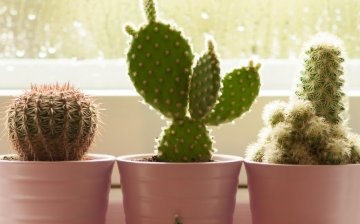
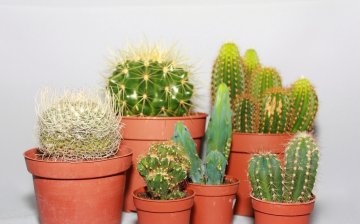
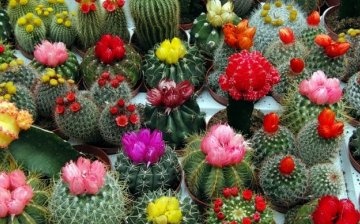
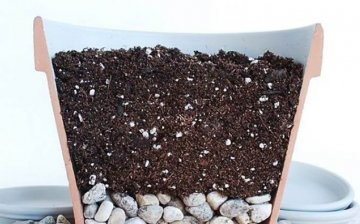
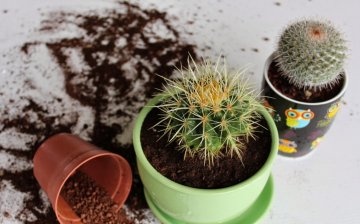


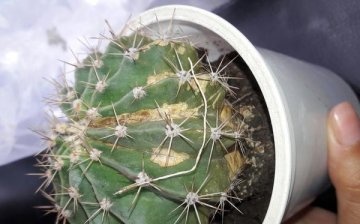








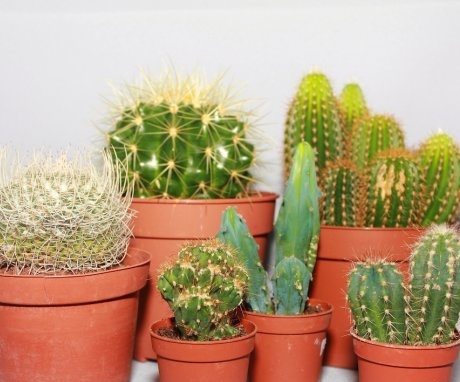
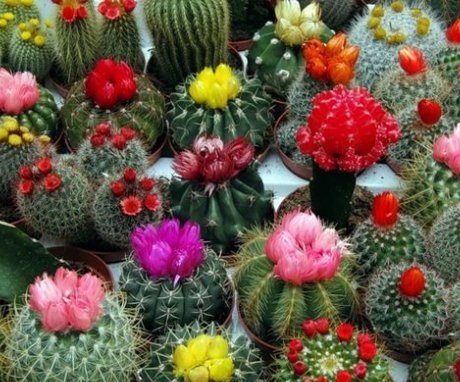
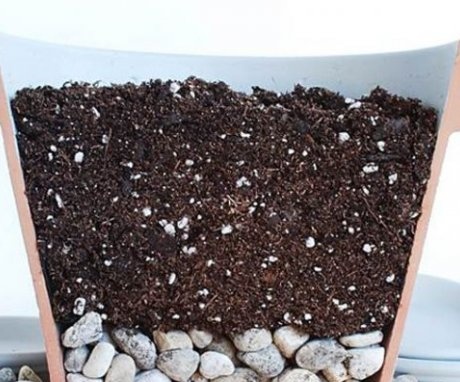
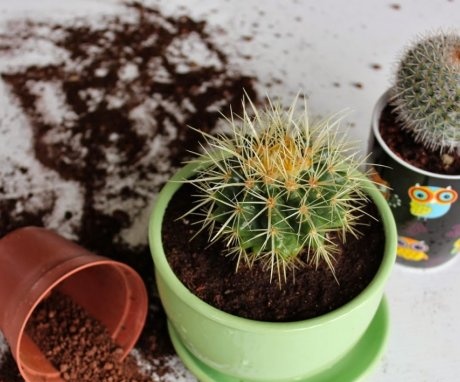
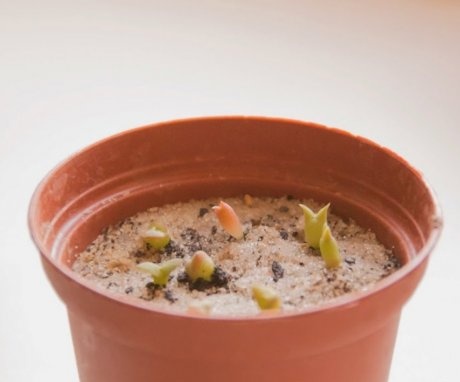

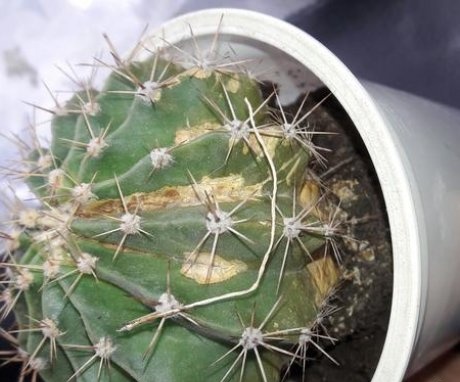
I always propagated cacti with children, I did not know about seeds before. She pinched off the baby, stuck it in the ground and that's it, it grows quietly for itself. The main thing is not to overfill. Unfortunately, my cacti have never bloomed. Most likely due to a lack of sunshine.